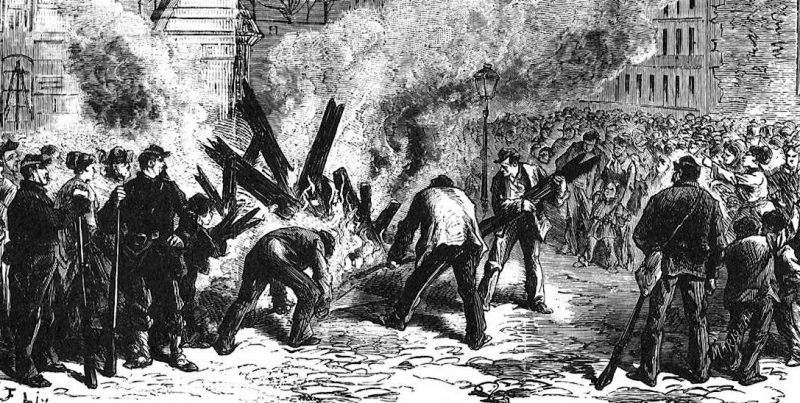Forms of Proletarian / Types of Proletariat

What is Proletariat?
Called proletariat to the less powerful class of traditional pyramid power structure, which is devoid of goods and means of production and therefore should lease their strength work to third parties to receive in exchange for financial compensation (salary). It is also known as the working class or working class.
The proletariat is distinguished from other classes such as the bourgeoisie in that it does not possess greater assets than its capacity for work, and therefore constitutes the basis of capitalist society of, as defined by Karl Marx, the “exploitation of man by man“. The bourgeoisie, on the other hand, is the owner of the means of production and requires labor to generate consumer goods.
This term is often used as a synonym for austerity, poverty or simply to refer to the lower or subjugated segments of a human group: “the proletariat of ideas” or “the cultural proletariat“.
Characteristics of the Proletariat
-
Origin of the term
The term proletarian, where “proletariat” comes from, originated in the ancient Roman Empire, since it was designated the citizens of the lowest stratum (proletarii) who had no property and could only contribute to the State their offspring (their offspring) to swell the imperial armies. They were the sixth social class after five types of owners and landowners.
-
The industrial Revolution
During the Industrial Revolution that forever transformed human trades and formally originated the dynamics of capitalism, the term “proletariat” came to designate the workers exploited by the bourgeoisie that owns factories and businesses. This term had been briefly positivized during the French Revolution, as a synonym for worker and popular fighter, but it was finally appropriated by Marxist theory to designate the lowest class of the capitalist pyramid.
-
The Proletariat in Modern Capitalism
The proletarians can only sell their effort to society, that is, rent their capacity to work by the hour and receive in return an economic compensation, something similar to what the rentier bourgeoisie does with the rents of their properties or real estate. This stratum also includes artisans, service sector employees and all those salaried workers who do not have the means of production in their name.
The arduous employment conditions to which they were subjected during early capitalism, led to the emergence of forms of resistance and organization to demand more benign working conditions, thus giving rise to trade unionism and the workers’ struggle for demands.
-
Differences with the Bourgeoisie
The substantial difference between the proletariat and the bourgeoisie, and this is a central argument in the Marxist thesis, is that the latter owns the means of production, while the former sell their time and effort in exchange for money.
An example of this would be a shoe factory, in which 100 people work to produce goods that, when distributed and sold, will generate a monetary income to be distributed among the owner of the factory (who is the one who distributes it and is the owner of the business ), the payment and reinvestment of materials to continue production, and finally the payment of the salaries of the 100 workers, who will then be able to allocate part of said salary to buy some of the shoes that they themselves made.
-
Types of Proletariat
Traditional Marxist theory distinguishes between two forms of the proletariat:
- Proletariat as such, the workers, the wage earners, who sell their ability to work for money. It is the working majority.
- Lumpenproletariat or subproletariat. This is the name given to the unproductive, degraded sectors that do not even have labor to sell, and often engage in theft and other illicit activities to sustain themselves.
-
The Dictatorship of the Proletariat”
According to Marxist theories, the “dictatorship of the proletariat” would be a state in which the proletariat would hold political power instead of the bourgeoisie and therefore could control the means of production.
This stage would be, according to the theories of Marx and Engels, a kind of “transition” towards communism, which would be a state of ideal and equitable distribution of things, in which society achieves a harmonious balance between its needs and its capabilities. of production.
-
Proletarianization
Another of the key concepts of Marxism is “proletarianization“, which was thought as a logical consequence of the accumulation of capital, which in turn implied a growth of the working class: the more money the bourgeois owner of the factory obtained, the more workers would hire to expand his business.
However, proletarianization is seen as a phenomenon of downward social mobility, since it often implies the destruction of certain social welfare states as a result of privatization and the voracious growth of the market, which forces certain resistant sectors to become wage earners and lacking as well as other goods that would allow them to survive.
-
Strikes and Unions
Once aware of their social class and their level of exploitation, the proletarians proceeded to organize and demand better and more dignified conditions of employment, which led throughout the 19th and 20th centuries to numerous strikes, sabotage and conflicts between the workers. workers and the bourgeoisie.
Thanks to this history of struggle, changes took place that allowed the emergence of workers’ unions and certain levels of organization and recognition that promulgated the first labor laws.
- Cognitive
This is a term of post-industrial society, to designate those individuals who only possess their cognition, that is, their knowledge and their studies, to offer to the labor market exploitation. It is a growing form of proletariat in the computerized and technologized society, in which the worker has been displaced by the machine.
-
Precarious
Another contemporary term assimilable to the proletariat, but which refers to the precarious working conditions of those obsolete congnitarized individuals, who have lost their jobs or who have been trapped in the dynamics of professional and labor change of the so-called Digital Revolution, becoming obsolete workers and very cheap labor.